7. Opening Breakfast Scene (Reservoir Dogs, 1992)
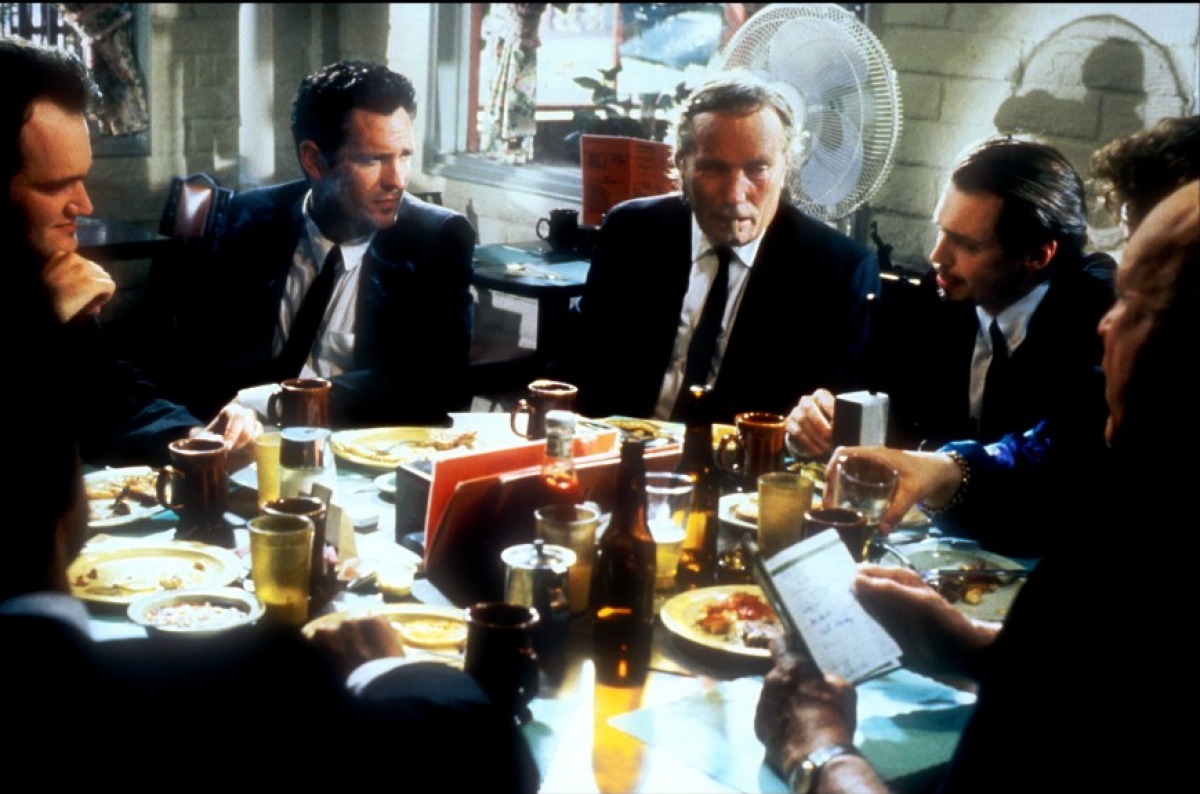
Tarantino’s first film opens with the group of thieves eating breakfast together. The camera pans around the group to introduce the audience to all the members of the gang. In typical Tarantino fashion, the very first conversation being heard in the film is about pop culture, specifically 1970s music and how it resonates with them, and about whether the Madonna song “Like A Virgin” is about big dicks or not.
This leads to Mr. Pink’s tipping debate and shows how stingy he is. This scene highlights the film’s humour and Tarantino’s flair for dialogue and how it is delivered by these great actors, especially Steve Buscemi.
6. Jack Rabbit Slim’s (Pulp Fiction, 1994)
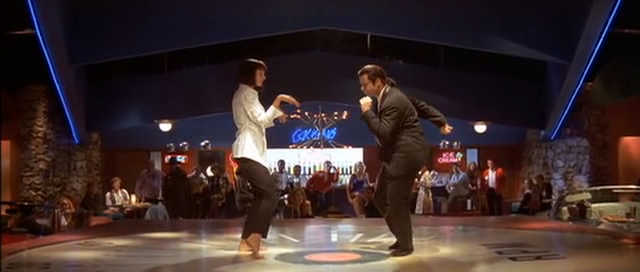
Perhaps the most iconic scene in Pulp Fiction, Vincent is taking his boss’s wife, Mia, out for dinner to keep her company. The 1950s themed diner Jack Rabbit Slim’s allows the funny Steve Buscemi to play a surly waiter dressed as Buddy Holly.
Vincent and Mia have dinner and subtly flirt with one another, and engage in conversation about whether it was true if her husband threw a man off a balcony for rubbing her feet. They then dance in the restaurant’s competition with some very smooth dance moves. With the camera panning back and forth to each of them as they look at each other, it is almost as if they are flirting through dance.
5. Opening Scene at French Farm (Inglourious Basterds, 2009)
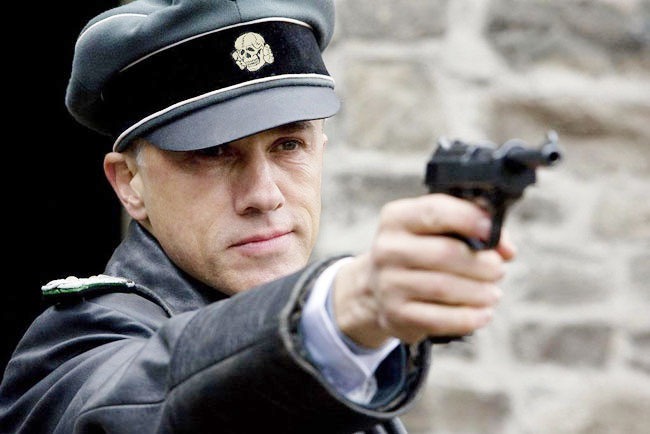
The tune in the opening scene of Inglourious Basterds is the Ennio Morricone score from the film The Big Gundown, setting the tone that the action in this film will be in the style of the spaghetti westerns of the 1960s, despite being set in Nazi Germany.
After the music ends though, the following scene will remind the audience that being a Jew living in this environment was truly a horrible existence. Colonel Hans Landa arrives at the LaPadite farm in rural France, and tells Perrier LaPadite (Denis Menochet) of his reputation as “The Jew Hunter.”
Christoph Waltz’s acting in this scene is subtle, but definitely gets its point across; this scene is a great introduction to Landa in that he is a well-spoken and charming man who often smiles, but is indeed a vicious killer. The tension is high throughout this scene; LaPadite is trying to appear unemotional to Landa until he cries when he betrays the Jewish family he is hiding, knowing their lives are at stake.
4. Cop Torture Scene (Reservoir Dogs, 1992)
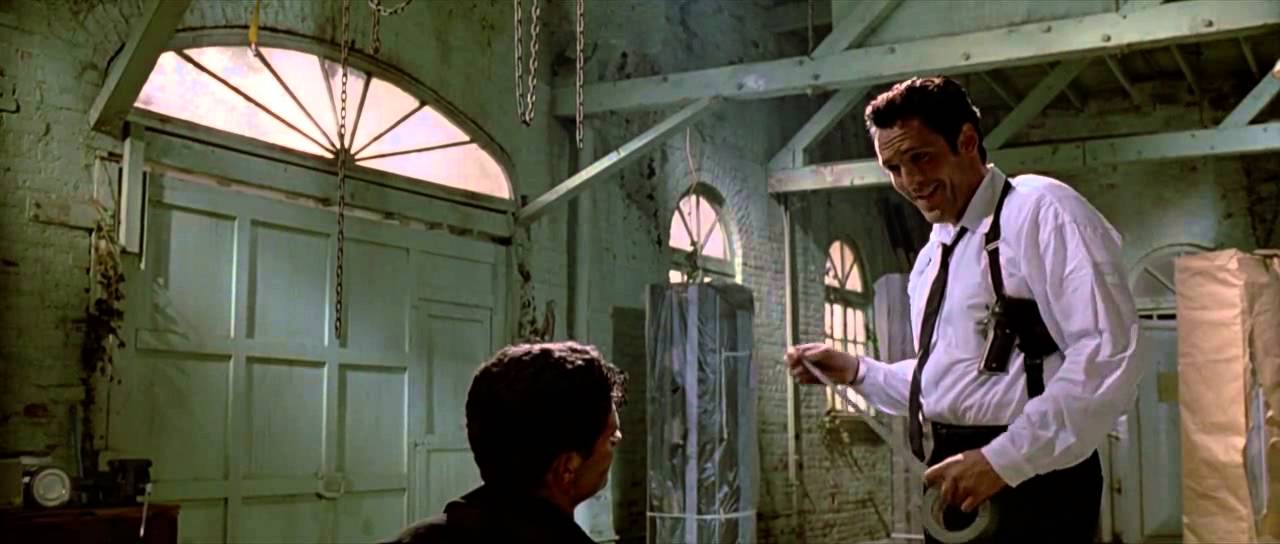
Mr. Blonde is left alone in the warehouse with Officer Marvin Nash (Kirk Baltz), whom Mr. Blonde captured during his escape. Mr. Blonde tunes the radio to K-Billy, which plays “Stuck in the Middle with You” by Stealers Wheel. Mr. Blonde sings and dances to the song, mocking Nash’s fear, before he slices the cop’s ear off and almost burns him alive.
The camera follows Mr. Blonde outside when he grabs some petrol out of his car, and then follows him back inside. This scene shows how nasty and uncaring Mr. Blonde is, and shows moviegoers around the world an early taste of the violence Tarantino films would present in the future.
3. Butch vs Wallace (Pulp Fiction, 1994)
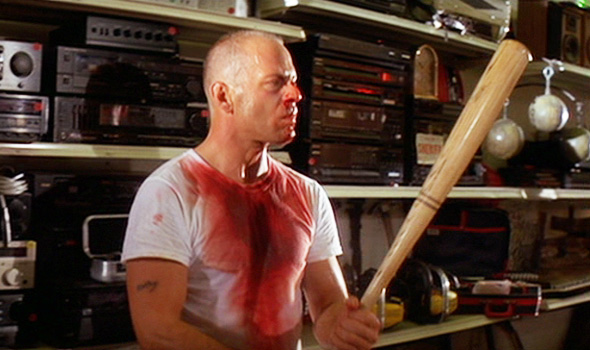
Boxer Butch Coolidge (Bruce Willis) and mobster Marsellus Wallace (Ving Rhames) fight each other until they end up in a pawn shop run by a pervert who holds them hostage. Their fear is obvious, as they have a good idea of what is about to happen to them with the ball gags in their mouths.
The store owner and his equally twisted friends rape Marsellus, but Butch manages to almost escape before his conscience tells him to save Marsellus from further humiliation and certain death. Butch has a variety of weapons to choose from, but he chooses a katana, a weapon that was perhaps an early indicator that Tarantino had the Kill Bill movies in his mind.
This scene is both graphic and dark, showing the twisted side of humanity and what a series of unfortunate events can do, such as in the type of pulp fiction stories this film is named after.
2. The Final Showdown (The Hateful Eight, 2015)
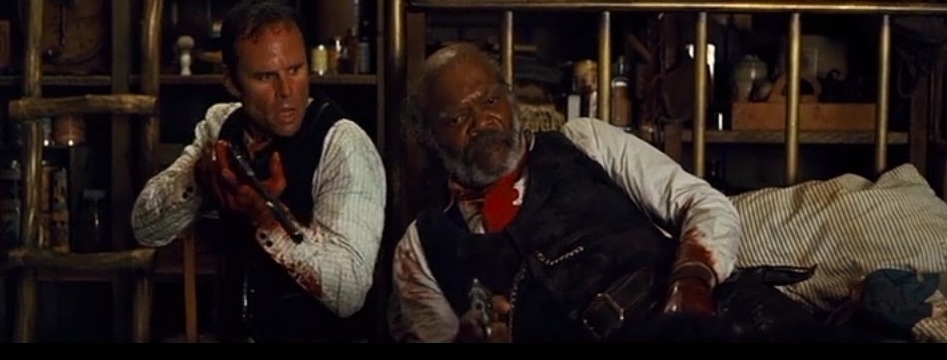
After nearly three hours of the audience trying to figure out who is responsible for the series of events in the film, the finale of this high drama mystery Western is intense and violent. Major Warren (Samuel L. Jackson) and Sherriff Mannix (Walton Goggins) face off against the vile criminal Daisy Domergue (Jennifer Jason Lee).
Mannix faints from blood loss from a gunshot wound, and Daisy saws off the arm of John “The Hangman” Ruth (Kurt Russell) to free herself from his handcuffs so she can kill her enemies.
Tarantino uses the background score in this scene to really emphasise the urgency and tension everyone is experiencing, especially when Mannix and Warren decide to brutally hang Daisy. These men then have to wait to die from their wounds, providing one of the grimmest endings in a Tarantino film.
1. The Final Showdown (Inglourious Basterds, 2009)
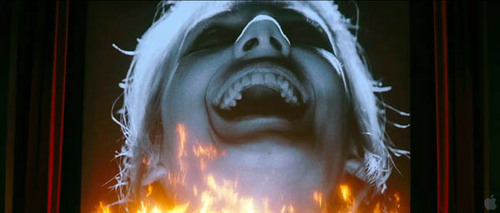
The finale of Inglourious Basterds is an action-packed one with all the different characters plotting to either annihilate the Nazis or to take advantage of the situation to benefit themselves. The Tarantino-esque violence in this climax is bloody and brash, and the screams of the theatre patrons are haunting, adding to the sheer grimness of their imminent deaths.
When the Nazis are watching their propaganda film Nation’s Pride, the hero of the film declares, “Do you have a message from Germany?”, which cuts to footage of Shosanna’s face saying she has a message for Germany, which is that they will die at the hands of a Jew.
When the fire starts, everyone inside is screaming and Shosanna is laughing cruelly, which becomes an even more disturbing image once the screen has been destroyed. This is a great visual effect for the Nazis to witness the face of their deaths before the cinema explodes in spectacular fashion.
Author Bio: Matt Wilson is a professional writer from Melbourne, Australia. His passion for cinema has always been a part of him and he aspires to be a screenwriter or a novelist. He particularly enjoys the films of Michael Cimino, Oliver Stone, Stanley Kubrick, Paul Verhoeven, David Lynch and Quentin Tarantino.